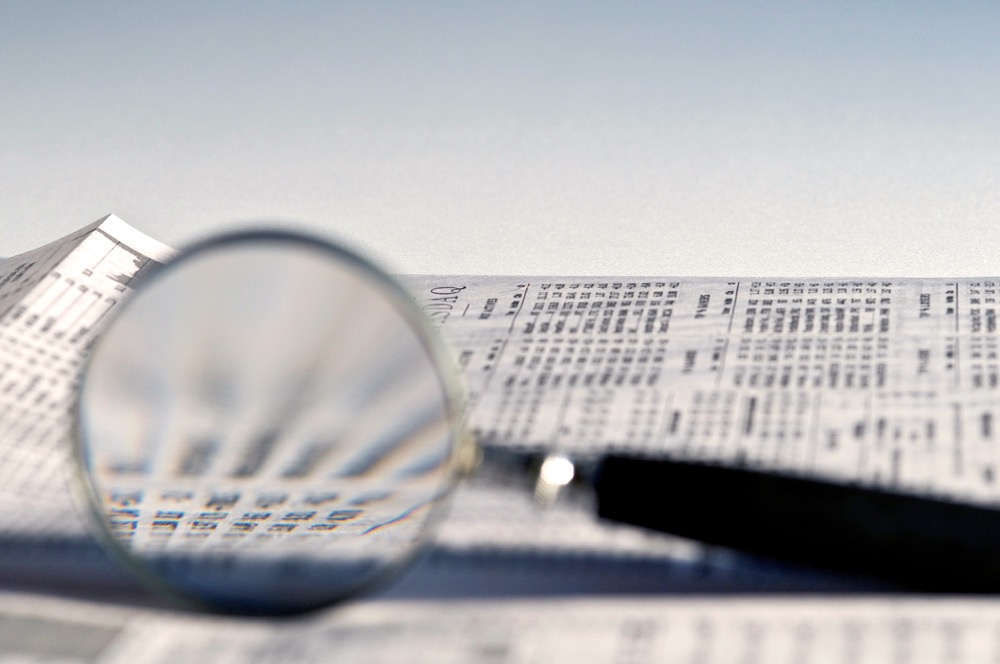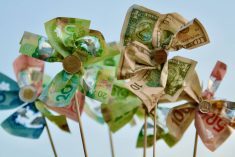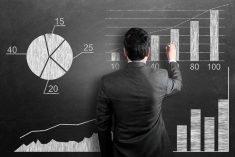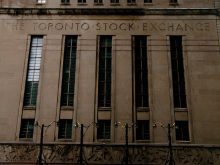Choosing stocks and bonds is in some ways like picking the petals off a daisy. The choice: will it be regular income or capital gains (hopefully)?
Some investment assets pay regular income. In this category are conventional bonds that promise annual or semi-annual interest payments and dividend-paying stocks that make no firm promises but that traditionally pay and even raise their dividends.
Assets that pay income on a regular and dependable basis tend to have market prices more stable than those which do not. The promise of income induces investors holding the stocks or bonds to keep them, even if their prices take a dip, and to defer sales even if there is a handsome profit to be had. The incentive to hold varies with the tastiness of the dividend. This causes stocks like telecom BCE Inc., with handsome dividends with little or no chance in sight to cut them, to have relatively stable prices. Meanwhile, stocks with modest dividends, such as Apple Inc., which competes in the dog-eat-dog tech industry, have volatile share prices.
Read Also

Gentle treatments for pain in the neck
Heading toward year-end, people unknowingly tense up against the cold and busyness, causing neck pain that can often be treated with appropriate support and gentle mobility, athletic therapist Kathlyn Hossack says.
Let’s look at what dividends — and dependable businesses, of course — do for the two companies, both in communications: BCE Inc., with landlines and cell services, among other things; and Apple Inc., a technology company that makes cell phones.
BCE Inc. has a 4.88 per cent annual dividend. Apple Inc. has a 1.67 per cent dividend. The gap between the dividends accounts for much — but not all, to be sure — of the ups and downs of their stock prices. BCE Inc.’s up and down are modest, those of Apple Inc. are dramatic. The measure of jumpiness is beta, a number which shows relative volatility. The beta of the market as a whole is 1.0. BCE Inc.’s beta is 0.16, very low indeed. Apple Inc.’s beta is 1.21. Thus BCE Inc. wobbles only 16 per cent of the amount of other stocks listed on the TSX while Apple Inc. outdoes its NASDAQ index by a fifth.
If we look at the price lines of the phone maker and the tech company, the differences are dramatic. BCE Inc.’s prices trace a relatively smooth line from $30 in 2010 to about $60 today. Apple Inc.’s price line moves from US$25 in 2010 to US$136 today. There is more involved than just dividends as a fraction of stock price, for Apple Inc. has grown its business and even culture extraordinarily well while BCE Inc. was and always will be a relatively dull phone service provider.
Bond variability
Bonds, too, show price wobbles consistent with the dependability of their interest payments. For bonds, that dependability, which goes from 100 per cent for U.S. Treasury and Government of Canada issues to “high” for top corporate bonds to “just good” for lower grades of investment-level bonds to “not so good” for junk bonds, especially those in the lower ranges of quality. Default rates 10 years after issue for government bonds are zero, for top corporate bonds 0.45 per cent in the U.S. and zero in Canada, for lower quality investment grade bonds 6.1 per cent for U.S. bonds and 3.8 per cent for Canadian issues, and a shocking 56.5 per cent for U.S. issues and 33.3 per cent for Canadian issues rated at the bottom of the junk heap. The market prices adjust for these risks, so that a U.S. Treasury or Government of Canada bond pays a couple of per cent for 10 years, solid corporate bonds double that, and chancy junk bonds can offer up to 50 per cent combined interest if it is paid and refund of bond price at maturity if it happens.
Getting paid on time is the essence of the problem. Bond holders almost always get paid, for even if a bond does default, the promise of payment can be taken to court. The resolution is that the bond holders, often after many years, wind up with stock in a reorganized company coming out of bankruptcy. Stockholders who are not paid dividends have nothing, for dividends are not guaranteed by anybody and, technically, the stockholder’s only right is the essentially meaningless one of voting for directors.
More risk, more return?
What does all this mean for your own investment policy? If you get upset by market swoons, go for low volatility stocks or dividend-focused exchange traded funds and mutual funds. If you believe that what goes down will bounce up, as usually happens with broad indices, and if your stomach can take the ride, then volatility may be less of a problem.
Some say that if you take bigger risks, you can have bigger returns. Over periods of centuries, it is true. But one’s lifespan is not centuries and the concept only works for very broad blends of assets. If you go back to 1800, then zero volatility cash has a low negative return from uncompensated inflation erosion, more volatile bonds have a higher return, and stocks with far more risk and no promises at all have a still higher return. But for any one stock or any basket of conceptual stocks (think of the dot coms that nearly all flopped), it does not work. After all, if a company goes bankrupt, which is the ultimate risk, that’s it for compensating return.
Bottom line: do not embrace risk you cannot afford. That is the concept, but how do you put it into practice?
For most investors, picking one level of risk bundled into just one concept is wrong. Why? Because everything in investment markets is fluid. The most solid government bond bought for $1,000 could slump hundreds of dollars if interest rates rise a good deal. That seems unlikely right now, but over a 20- or 30-year life of a long bond, it can happen. It did in the late 1970s and early 1980s when interest rates on bonds were in double digits. Good stocks, as Kodak and Polaroid once were, can turn into bankrupts, as both did.
Diversification is the key to survival, especially for investors who either do not live by their computers or who, as many of us do, discount bad news that challenges our mental commitments to concepts we like. Few analysts believed Bre-X Minerals, which was seen as the biggest gold mine in the world, was a fraud until its price had collapsed to about zero. Same for Enron, the American energy trader and vast fraud.
Diversification is the essence of risk management. It is easy to do with investment funds. There are perhaps 30,000 ETFs and mutual funds available. The magic of these things is that the broader the mandate and the more diversified the fund, the lower the management fees tend to be. You can buy a U.S. or Canadian broad ETF for less than 30 basis points and even as little as 10 basis points of fees a year. One basis point is 1/100 of one per cent By definition, you will be getting an asset with average market risk, beta = 1.0. Hold the asset for a decade or two and you should have a tidy return. The historical average of North American markets is 6.5 per cent a year composed of dividends of about 4.0 per cent and price gains of about 2.5 per cent. Take off 3.0 per cent inflation and you have a real return of 3.5 per cent, which is not bad for a passive investment. Run all this by your financial advisor and see what reaction you get.















